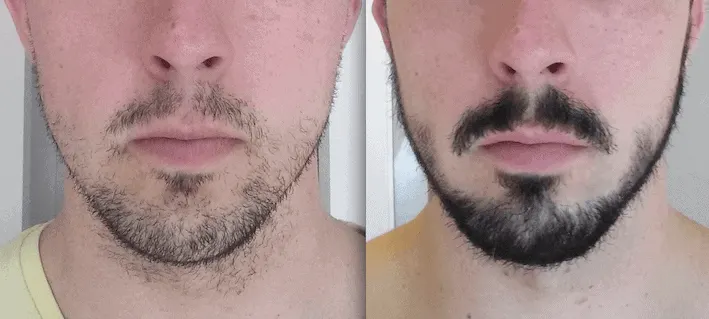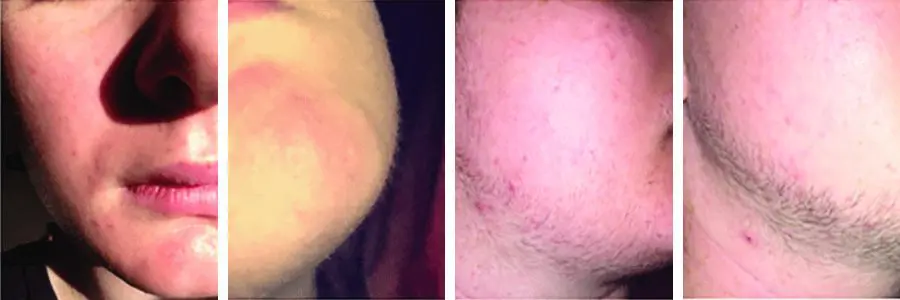As we age, our skin loses elasticity and volume, resulting in a tired and saggy appearance. While there are many invasive procedures that can help restore facial volume, they can be costly and come with risks. Fortunately, there are natural ways to restore volume to your face without the need for surgery or injections. Here, we have some effective methods for restoring facial volume naturally.
Who Can Benefit from Restoring Facial Volume?
Anyone who has experienced a loss of facial volume due to aging can benefit from restoring it naturally. As we age, our skin becomes thinner, drier, and less elastic, resulting in a loss of volume and firmness. This can lead to an uneven complexion, sagging skin, and wrinkles. By restoring facial volume naturally, you can regain your youthful appearance and boost your confidence.
What Causes Facial Volume Loss?
Facial volume loss is a natural part of aging. As we get older, our bodies produce less collagen and elastin, which are essential proteins that help keep our skin firm and plump. Additionally, fat pads in the cheeks and temples begin to shrink, leading to a hollowed-out appearance. Other factors that can contribute to facial volume loss include sun damage, smoking, stress, and poor diet.
When Should You Start Restoring Facial Volume?
It’s never too late to start restoring facial volume naturally; however, the earlier you start, the better your results may be. Waiting until you have significant volume loss may require more invasive treatments to achieve the desired results. Ideally, you should start incorporating natural volume-boosting techniques into your skincare routine in your mid-20s to early 30s.

How to Restore Facial Volume Naturally
Facial Massage
Facial massage is a simple yet effective way to improve blood flow to the skin and stimulate collagen production. Using your fingertips, gently massage your face in a circular motion, focusing on areas where you have lost volume. You can also use facial rollers or gua sha tools to enhance the benefits of facial massage.
Facial Exercises
Facial exercises can help tone and tighten the muscles in your face, resulting in a more lifted and contoured appearance. Some popular facial exercises include:
- The cheek lifter: Smile with your lips closed, then suck in your cheeks and hold for five seconds.
- The forehead smoother: Place your fingertips on your forehead and gently pull your skin upward while raising your eyebrows.
- The jawline tightener: Tilt your head back and press your tongue against the roof of your mouth while jutting your chin forward.
Hydration
Proper hydration is essential for maintaining healthy skin and restoring facial volume. Drink at least eight glasses of water per day and incorporate hydrating foods into your diet, such as cucumbers, watermelon, and leafy greens.
Nutrition
Eating a balanced diet rich in vitamins and nutrients can help support healthy skin and restore facial volume. Foods that are high in vitamin C, such as citrus fruits and bell peppers, can help boost collagen production and improve skin elasticity. Foods that are high in omega-3 fatty acids, such as salmon and walnuts, can also help nourish and plump the skin.
Skincare Products
Using skincare products that contain ingredients like hyaluronic acid, retinol, and peptides can help restore facial volume naturally. Hydrating and plumping the skin thanks to hyaluronic acid, while retinol helps stimulate collagen production. Peptides improve skin firmness and elasticity.
Pros and Cons of Restoring Facial Volume Naturally
Pros:
- Natural and non-invasive
- Cost-effective
- Can be done at home
Cons
- Results may take longer to see
- May not be as effective for more severe volume loss
- Consistency is key for best results
Alternatives to Restoring Facial Volume Naturally
While natural methods can be effective for restoring facial volume, there are also alternative treatments available, including:
Dermal Fillers
Dermal fillers are injections that help restore volume to areas of the face that have lost it. They can help plump up cheeks, lips, and other areas, resulting in a more youthful appearance.
Thread Lifts
Thread lifts involve inserting sutures into the skin to lift and tighten sagging areas. They can be a less invasive alternative to a facelift.
Fat Transfer
Fat transfer involves removing fat from one area of the body and injecting it into the face to restore volume. It can be a more permanent solution than dermal fillers.
Tips for Maximizing Facial Volume Restoration
- Be consistent: Natural methods require consistency and patience to see results. Stick with your routine and give it time before evaluating its effectiveness.
- Protect your skin: Sun damage can accelerate collagen breakdown, leading to further volume loss. Wear sunscreen daily and avoid prolonged sun exposure to protect your skin from damage.
- Combine methods: Incorporating multiple natural methods, such as skincare products, facial massage, and facial exercises, can help maximize your results.
- Consider professional treatments: If you have significant volume loss or are looking for more dramatic results, consider consulting with a qualified provider for dermal fillers, thread lifts, or fat transfer.
Conclusion
Embracing natural methods to restore volume to your face is a gentle and effective way to enhance your beauty and boost your confidence. From facial exercises that tone and tighten to nourishing skincare ingredients that promote collagen production, these non-invasive techniques can make a significant difference in rejuvenating your appearance. By consistently incorporating these natural remedies into your daily routine, you can nourish and revitalize your skin, restoring a youthful and radiant glow to your face. So, say goodbye to invasive procedures and hello to the beauty of aging gracefully and naturally, as you embrace the fullness and vibrancy of life reflected in your radiant, voluminous face.
FAQs
- Is restoring facial volume naturally safe? Yes, natural methods for restoring facial volume are generally safe. However, it’s essential to choose products and techniques that are right for your skin type and to consult with a dermatologist if you have any concerns.
- How long does it take to see results from natural facial volume restoration? Results from natural facial volume restoration can vary depending on the method used and the individual’s skin type. With consistent use, some methods can produce noticeable results within several weeks to months.
- Can I combine natural and invasive methods for facial volume restoration? Yes, combining natural and invasive methods can help maximize your results. Be sure to consult with a qualified provider if you opt for an invasive treatment.
- Are there any side effects associated with natural facial volume restoration? Side effects from natural facial volume restoration are generally mild and includeredness, irritation, and temporary swelling. However, if you experience any severe or persistent side effects, consult with a healthcare professional right away.
- Do facial exercises really work for restoring facial volume? Facial exercises can help tone and tighten the muscles in your face, resulting in a more lifted and contoured appearance. While there is some debate about the effectiveness of facial exercises, many people have found them to be helpful in restoring facial volume and improving overall skin health. Consistency is key when it comes to facial exercises, so be sure to incorporate them into your daily routine for best results.





